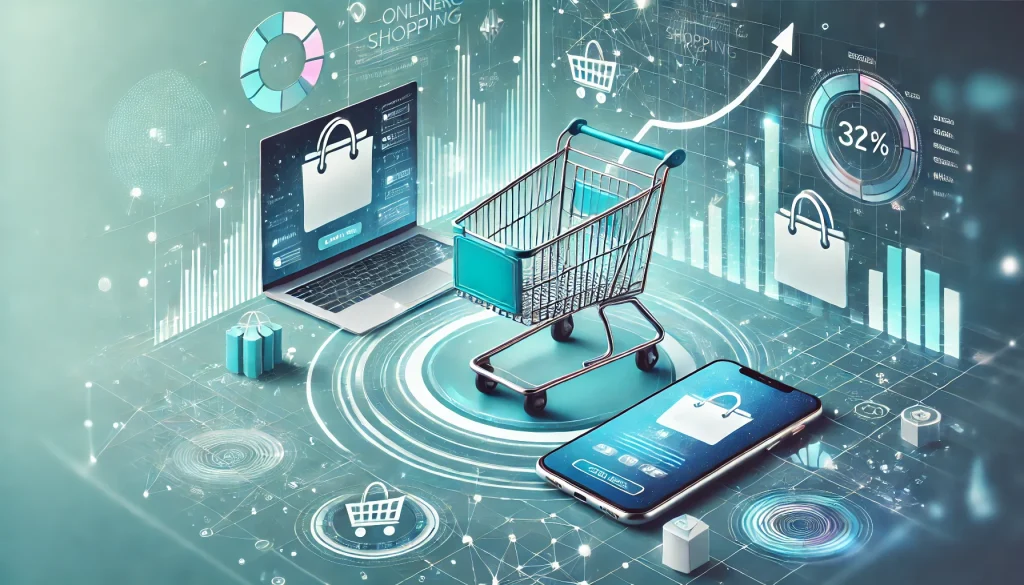If you’ve noticed yourself shopping online more often than in recent years, you’re not alone. India’s e-commerce industry is booming, with millions of people now shopping from their smartphones and laptops. Affordable data plans, widespread smartphone adoption, and the ease of digital payments through UPI have made online shopping a breeze, even for those in Tier-2 and Tier-3 cities. What’s really exciting is that this isn’t just a temporary trend – we’re witnessing the beginning of a massive shift in the way Indians shop.
According to Google’s latest report, India’s internet economy is projected to hit $1 trillion by 2030. That’s a staggering jump from $175 billion in 2022. As more rural areas get connected and local language content becomes more accessible, e-commerce in India is poised to become a global powerhouse. For businesses, this rapid growth presents some golden opportunities to reach a wider, more diverse audience.
But what’s driving this growth? Let’s dive into a few key trends shaping the future of e-commerce in India.
AI-Powered Personalization
Artificial intelligence (AI) is no longer a futuristic concept – it’s here, and it’s transforming the way we shop. In the e-commerce space, AI is expected to play a significant role in personalizing customer experiences. From recommending products based on your past purchases to predicting what you might want next, AI helps businesses make your shopping experience feel tailored just for you.
We’re already seeing AI-powered chatbots and virtual assistants enhancing customer service by providing real-time support. Ever had a question while shopping online and found a bot answering you instantly? That’s AI at work. But beyond just answering queries, AI will also streamline operations through automation, making online shopping faster and more efficient than ever.
Social Commerce: Shopping Where You Scroll
Social commerce is another trend that’s gaining momentum. The line between social media and e-commerce is blurring as platforms like Facebook, Instagram, and WhatsApp become not just spaces for social interaction but also vibrant marketplaces. This trend allows users to discover, share, and buy products seamlessly, all within the apps they’re already using daily.
What’s even more fascinating is how social commerce opens the door for real-time feedback and direct interaction with brands. Have you ever bought something because you saw an influencer using it? That’s the power of social commerce. As this trend grows, we can expect more brands to leverage influencers and social media engagement to drive sales and increase brand awareness. It’s a game-changer in how products are marketed and sold.
The Push for Sustainable Shopping
Sustainability is becoming a significant factor in the e-commerce industry as consumers are increasingly conscious of the environmental impact of their purchases.
Interestingly, it’s creating a ripple effect. As more platforms offer sustainable options, they’re also promoting responsible consumption practices. This not only benefits the environment but also adds a layer of trust between the brand and the consumer. Additionally, e-commerce will continue to drive competitive logistics, working to shorten delivery times and reduce carbon emissions through more efficient transportation and packaging methods.
The Rise of Local and Personalized Shopping Experiences
Finally, one of the most exciting trends is the growing demand for local, personalized shopping experiences. Advanced data analytics allow e-commerce platforms to understand consumer preferences on a deeper level, offering recommendations that feel more tailored and relevant. And this isn’t just about making your shopping more convenient – it’s also about celebrating and supporting local businesses. We’re likely to see a surge in sales of Indian-made products, showcasing the country’s rich cultural heritage to a global audience.
Wrapping Up
E-commerce in India is evolving at an incredible pace, and these trends are just the tip of the iceberg. From AI-driven personalization to the rise of social commerce and sustainable shopping, the future looks bright – both for consumers and businesses. The takeaway? Whether you’re a shopper or a business owner, now is the time to embrace these changes and ride the wave of India’s e-commerce revolution.





